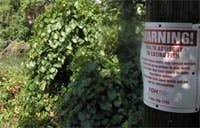The Water Environment Research Foundation (WERF) is now accepting proposals for research to gauge the relative contribution of mercury being discharged from wastewater treatment facilities. Up to $275,000 in funding will be made available to develop technical guidance regarding the environmental measurement, fate and significance of potentially bioaccumulative mercury entering receiving waters under a range of conditions.
Through this research, WERF hopes to determine the relative contributions of mercury in receiving waters from all quantifiable sources including, but not limited to, WWTP effluents, urban runoff, contaminated sediments, air deposition and mine drainage. This information would provide WWTPs and other stakeholders an ability to characterize the mercury in WWTP effluent relative to other sources and inform decision makers on how to best allocate resources at the WWTP-level and the watershed-level to control potentially bioaccumulative mercury and minimize health and environmental risks.
“The advanced treatment needed to reduce levels of mercury in WWTP discharges is a capital intensive process, and that means higher costs for the public,” said Dan Woltering, director of WERF research. “By seeking out a better understanding of the relationship between the levels of mercury in discharges from these facilities and mercury bioaccumulation, we can provide the public assurance that their dollars are well spent.”
The deadline for submitting proposals is Oct. 20, 2006.
Source: WERF


